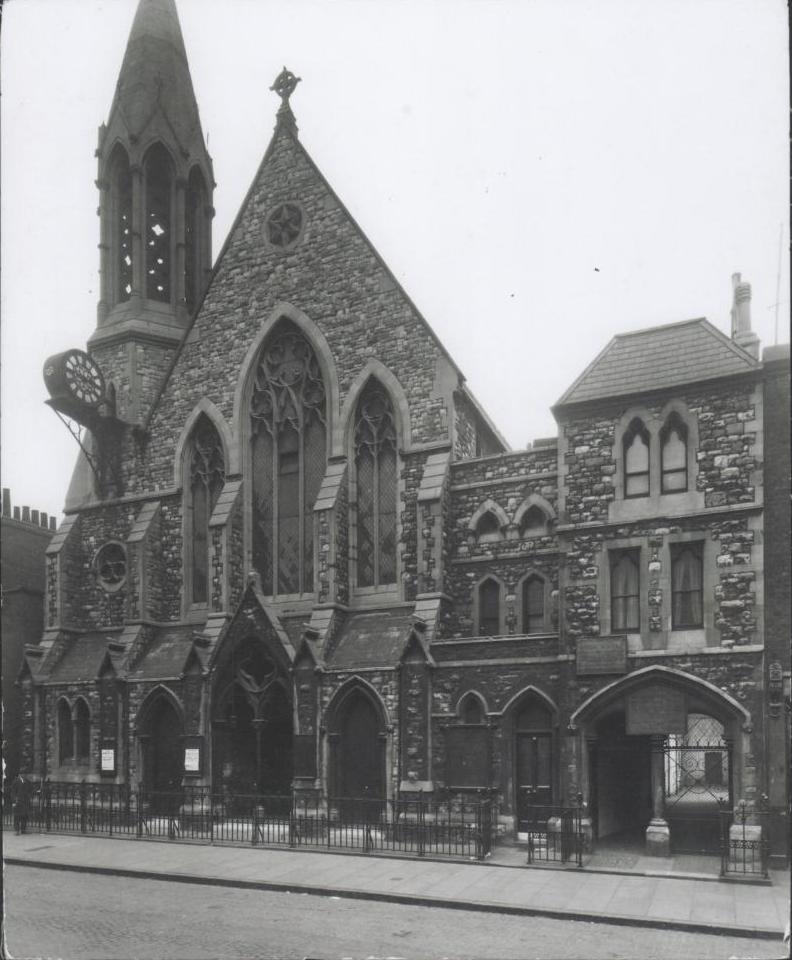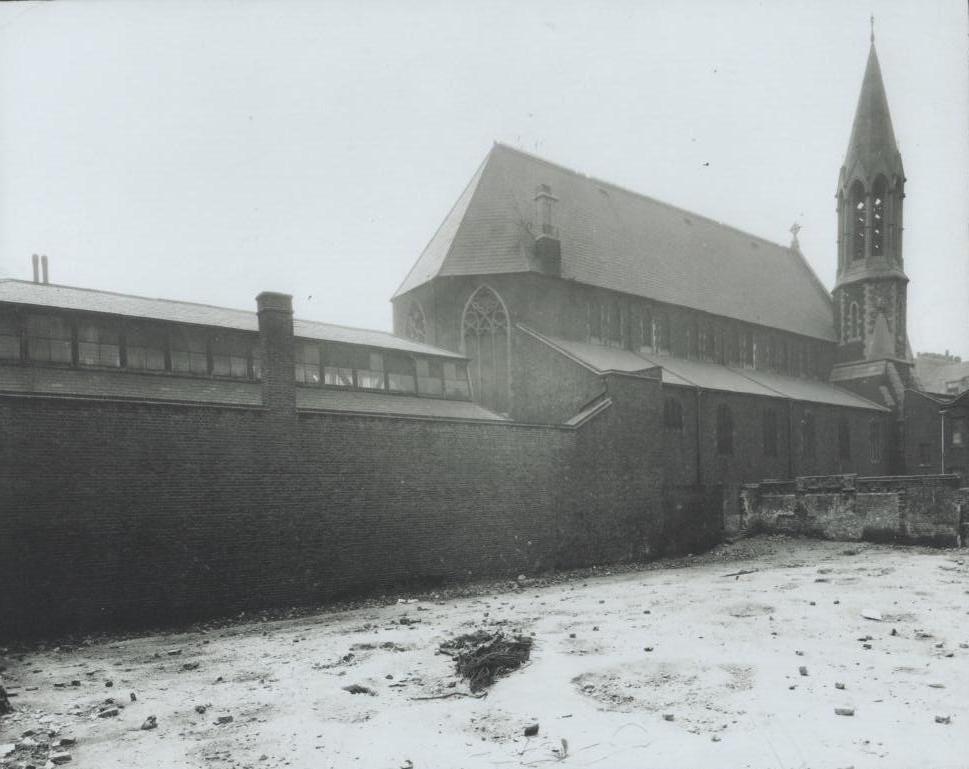Christ Church, Somerstown.

In 1868 George Moore had built, at his expense, a church, known as Christ Church and associated school in a poor district of London called Somerstown. The Church which seated a thousand persons was much needed because the church that had formerly served the district had been demolished to make way for the development of the railway and re-built some distance away. Sadly, both the Church and the School were destroyed in the blitz.
The site of Christ Church, Somerstown photographed in 2010.
No trace of either the Church or the associated school survives. I was told by a local resident who had lived in the area since the early 1950s that he recalls that the rubble from the bombed buildings was still present when he first lived there and that until just a few years ago part of a wall of the Church still stood until it was demolished to make way for a children's play area.

Christ Church School, Somerstown.
An Extract from St Pancras by Frederick Miller
From p 86 -87 St Pancras by Frederick Miller
No part of London presents a more peculiar population than does that of Somers Town. The large number of French-men who made it their home when anarchy existed in their own country, bringing with them their natural characteristics and form of religion; many representatives also of the sister isle, who seem to have a natural affinity in temperament as well as in faith with their polished co-religionists - besides a due admixture of the natives of nearly every nation - render the present population (some are the third or fourth generation of those who were the first settlers in Somers Town) the most difficult to deal with, especially by a clergyman of the Established Church. When the Church of St Luke's, near King's Cross, was removed for the erection of the Midland Railway Station, the inhabitants of Somers Town were entirely deprived of its accommodation, as that Church was re-erected in Kentish Town. The munificent liberality of Mr George Moore, however, supplied the want by the erection at his sole cost of a church and commodious schools in Chalton-street with an entrance is Ossulston-street. This church is called Christ Church and was erected in 1868. It is endowed by the ecclesiastical Commissioners, an absolute necessity in so poor a neighbourhood. The number of inhabitants in the district is estimated at 12000. The Fifth Series of Special Services was held in October, 1872, extending over eight days and each service was well attended . A review of the efforts made to christianise this "Nazareth" of the metropolis will show the great importance and value of systematic organisation under a zealous and painstaking clergyman. In the services of the church care has been taken to make them attractive, and the choir is said to be the equal to any in North London. Four Bible classes are provided for working men, one of which is specially for the blind, who meet at Brill Hall. In the course of the year 20,000 visits had been made to the homes of the people in the district by the pastor, the Rev J. N. Worsfold M.A.*, and his clerical and lay assistants.
The greatest gain to a poor neighbourhood, however, arises from the introduction of good schools. Those attached to this church are reported to be flourishing, both as regards attendance and efficiency. The average number of children in attendance is 800; and out of an expenditure of £700, £250 has to be met by voluntary subscriptions.
In no district in the metropolis, perhaps, can be found more squalor, or more depressing scenes than in this. The clergyman who, in the daily exercise of his pastoral office, is looked upon as a minister of mercy and consolation, needs great wisdom and discrimination. The Rev, Mr Worsfold* is well qualified for this responsible office, from a large experience gained in former parishes, especially Staffordshire.
* George Moore left The Reverend Worsfold the sum of nineteen guineas in his Will